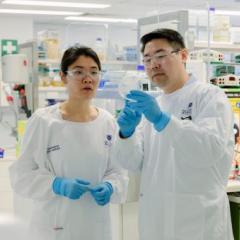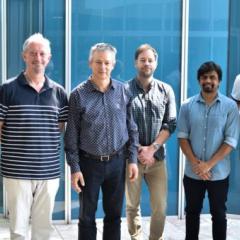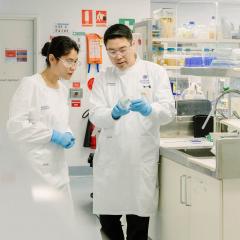Billions of neurons in the human brain are organised into highly interconnected neural circuits for efficient processing of sensory information.
How neurons dynamically modulate their synaptic strength is one of the outstanding and most fascinating questions in modern neuroscience. To answer this question, our laboratory focusses on mechanisms that regulate neuronal trafficking (both pre- and post-synaptic membrane trafficking), as well as the epitranscriptomic (RNA modification) mechanisms underlying activity-dependent gene expression during synaptic plasticity, learning and memory. Ultimately, we aim to understand how dysregulation of these cellular processes contributes to neurological disorders and neurodegenerative diseases.
Group leader

Associate Professor Victor Anggono
Group Leader, Synaptic Neurobiology
Senior Research Fellow
+61 7 3346 6325
+61 7 3346 6417
v.anggono@uq.edu.au
UQ Researcher Profile
Our approach
Our research combines biochemical, molecular and cellular biology in both cell culture (primary neurons and cell lines) and mouse models. We utilise gene editing technology, cutting-edge microscopy, proteomics, next-generation sequencing and behavioural analyses in our study. We are particularly interested in understanding the complex neuronal signalling cascades through protein-protein interactions and post-translational modifications of key synaptic molecules.
Research areas
- Neuronal trafficking
- Neuroepigenetics
- Neurodegenerative diseases
Latest news
-
-
QBI researchers secure $3.2 million NHMRC funding
18 December 2023
Alumni
- Dr Se Eun (Joanne) Jang – PhD student (2019)
- Dr Sumasri Guntupalli – PhD student (2020)












